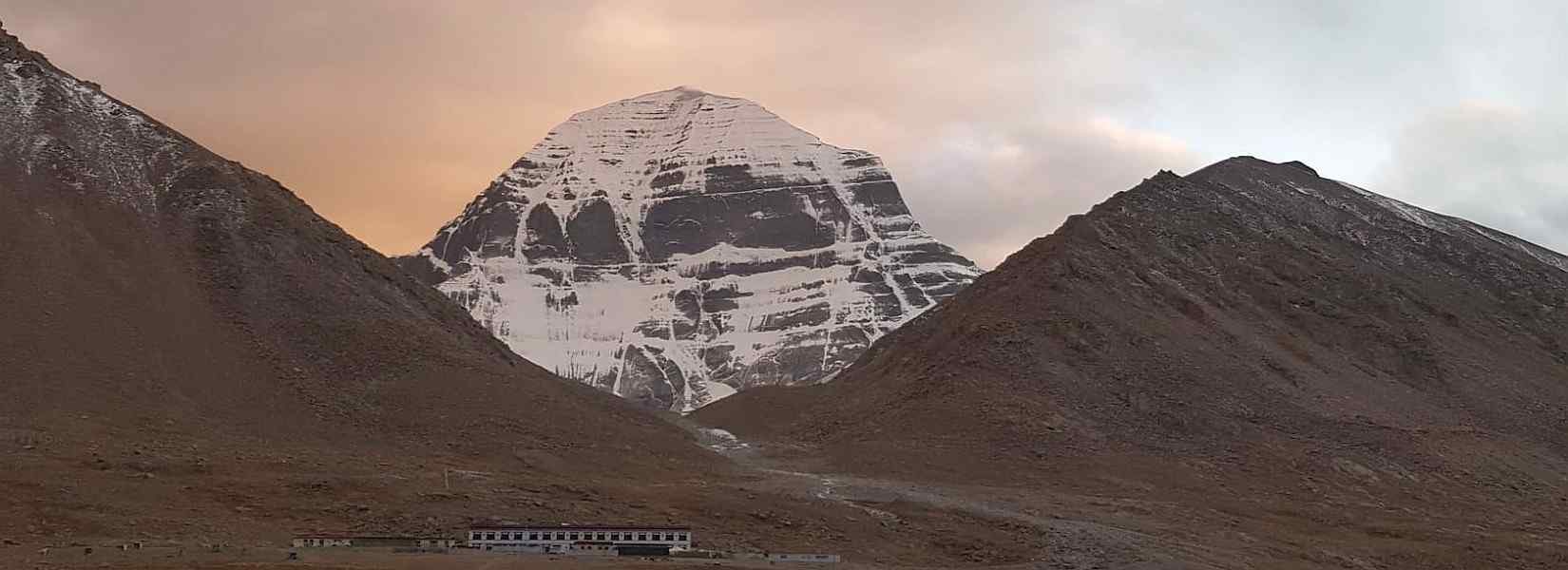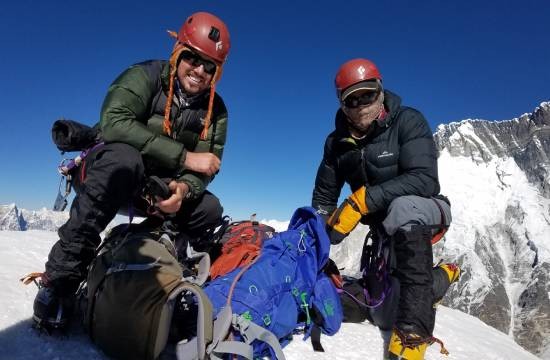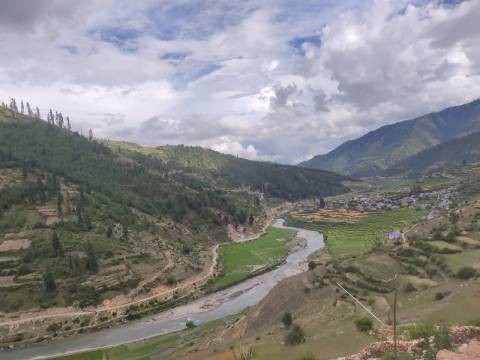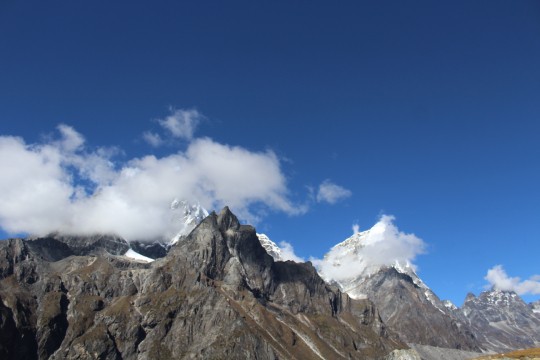Mt. Kailash6,638 m (21,778 ft) is located in Tibet, the autonomous region of China. This holy mountain is close to Lake Manasarovar. Mount Kailash is
Table of Content
Mount Kailash
Mt. Kailash6,638 m (21,778 ft) is located in Tibet, the autonomous region of China. This holy mountain is close to Lake Manasarovar. Mount Kailash is considered to be a sacred mountain in four religions: Bon, Buddhism, Hinduism, and Jainism. Every year, thousands of pilgrims and tourists flock to Mt. Kailash. The word ‘ Kailash’ is supposed to be derived from Sanskrit which means crystal.
Hindus consider Mt. Kailash as the abode of the wild mountain god Shiva and a symbol of his penis; Jains believe the mountain where their first leader was enlightened. Similarly, for Buddhists, Mt. Kailash is the navel of the universe; and for adherents of Bon, the home of the sky goddess Sipaimen.
Every year, thousands of pilgrims and tourists flock to Mt. Kailash. The pilgrims believe that the trail to Mt. Kailash is holy and they will have holy feet after beginning on the trail which is believed to bring good fortune.
The path around Mt. Kailash is 52 km which is to be done in one day. Hindus and Buddhists make their trip clockwise direction whereas Jains and Bonpos make it anticlockwise direction. It takes around 15 hours to circumambulate Mt. Kailash which is a tough task. Sometimes, people get altitude sickness too.
To go to Mt. Kailash, we need to travel via Tibetan plateaus from Kathmandu by overland. From Kathmandu, it takes four to five days to get to Mt. Kailash.
Yamdruk Lake Tibet
Yamdrok Lake is one of the largest freshwater lakes in Tibet. It is considered to be a sacred lake in Tibet. The lake is 72 km long. It is surrounded by alluring snow-fed mountain peaks. Numerous creeks from the Himalayas feed this lake. It is a turquoise lake. The local mythology says it is the transformation of the goddess. There is also Yamdrok Hydropower Station which is the largest hydropower station in Tibet.
The lake is considered to be a sacred place according to Tibetan people for they believe that the deities live in the lake and the lake has spiritual power too.
Every Tibetan who follows Dalai Lama makes their pilgrimage to Yamdrok Lake considering that the lake is divine.
Everest Base Camp
There are two popular Everest Base Camps: South Base Camp is in Nepal at an altitude of 5,364 meters (17,598 ft) while North Base Camp is in Tibet at 5,150 meters. These base camps are used by the climbers as the campsites before scaling Everest.
One is required to obtain a permit from the government of China to visit Northside Everest Base Camp which is on the Tibetan side. Truly speaking, the north-side Everest Base Camp in Tibet is less visited than the Everest Base Camp on the Southside in Nepal.
We can obtain the permit to visit Everest Base Camp via travel companies at Lhasa. They will offer you a complete package which includes a Driver, vehicle, and guide along with the permit.
We will drive around 200 km from Lhasa to get to the North Everest Base Camp on the Tibetan side. We witness mesmerizing mountain panorama including Mt. Everest ( 8848m) the top of the world. We feel truly blessed to be here.
Potala Palace
Potala Palace in Lhasa was the residence of Dalai Lama before he fled to India in 1959. Now, the palace has been converted into a museum and it is a World Heritage site. Potala Palace is built on the rock and it is located between Drepung and Sera monastery. Dalai Lama ordered to construction it in 1645. Constructing the interior part of Potala Palace, it took 45 years to complete. The exterior part of the palace was completed in 3 years.
It is a thirteen-story building with more than 1000 rooms. Numerous idols and inscriptions make the palace worth visiting. This palace tells us the entire history and civilization of Tibet. Mostly, it tells authenticity about Buddhism.
The palace, later, was used as a winter palace by the Dalai Lama.
The furnishings, art and architecture, inscriptions, idols, paintings, and galleries are marvelous to see.
Sera Monastery
Sera Monastery in Tibet is located 2 km north of Lhasa and 5 km away north of Jokhang. The word ‘Sera’ in Tibetan denotes ‘Roses’. Behind Sera Monastery, there were blooming wild roses.
The original structure of Sera Monastery was founded in 1914 by Jamchen Chojey Sakya Yeshe of Zel Gungtang
Sera Monastery consists of 19 hermitages and 4 nunneries. During the revolution in China, the monastery suffered terrible damage and numerous hermits were killed. There are more than 3000 monks living in Sera Monastery.
The monastery has been divided into two sections: pathways and colleges. The pathways contain assembly and dwellings. The colleges offer courses on Buddhism and Tantrik. They train the monks and nuns here. The scriptures, statues, and murals of the Monastery are astonishing.
Sera Monastery is one of the most popular university monasteries in the world to study Buddhism and Tantra.
Drepung Monastery
Drepung Monastery, like Sera Monastery, is a university monastery in Tibet located at the foot of Mount Gephel. It is the largest of all Tibetan Monasteries located 5 km west of Lhasa. Drepung Monastery was constructed in 1416 by Jamyang Choge Tashi Palden.
Drepung monastery was the residence of Dalai Lama before he constructed Potala Palace. Drepung Monastery owns more than 5000 celibate monks. Hundreds of monks get admitted every year at Drepung Monastery for Buddhist studies. This monastery was closed in 2008 due to the protest by monks against China. Many of the monks were killed and imprisoned. Later, it was reopened in 2013.
Visiting Drepung Monastery offers us holistic insights into Buddhism, Tibetan culture, and civilization. This exploration will be a blessed experience for a lifetime.
Jokhang Temple
Jokhang Temple is also popular as Jokhang Monastery. It is located in Bharkhor Street in Lhasa, the capital city of Tibet. Tibetans regard Jokhang Temple as the most sacred temple in Tibet. The architecture of the temple is a blend of Nepali, Indian, and Tibetan styles. The collections of statues are from Nepal, Tibet, and India.
Nepalese were not allowed to visit this temple during the Gorkha-Tibetan war. The Jokhang Temple was officially announced as a World Heritage site in 2000.
Princess Bhrikuti brought the statue of Akshobhya Buddha from Nepal and handed it over to Jokhang Temple. This temple has been listed as the 4A-level tourist site.
In 2018, the temple caught fire. The fire was put out quickly and no terrible destruction occurred. Later, it was renovated and now everything is fine. The temple is astonishingly decorated with winged apsaras, human and animal figurines, flowers, and grasses. Similarly, Images of sphinxes with a variety of expressions are carved below the roof.
The cultural artifacts including sculptures, Thanks, and paintings are marvelous to experience at Jokhang Temple.
Barkhor Street
Barkhor Street is located around Jokhang Temple in Lhasa which is a popular tourist hub in Tibet. This historical street used to be the place for protest against when there was an anti-China revolution. The street is close to Jokhang Temple. We can observe beautiful incense burners at the entrance of Jokhang Temple which is a part of Barkhor Street. Following a clockwise direction, we make the circuit of Jokhang Temple. The street is pleasant and serene to observe the artistry around



